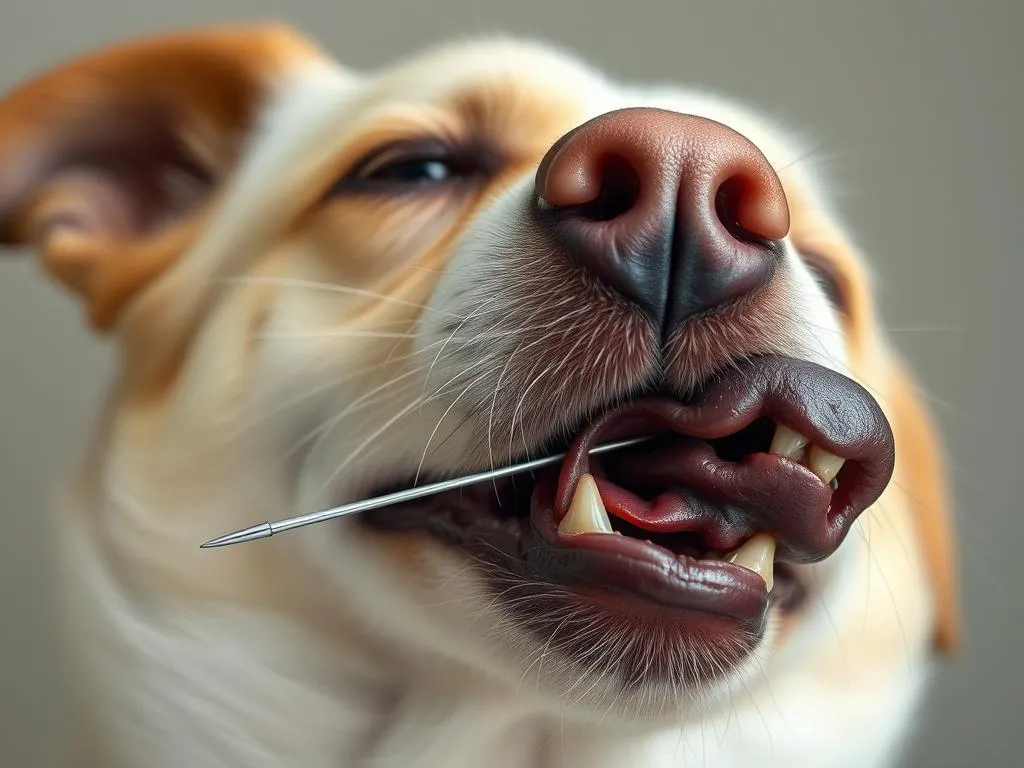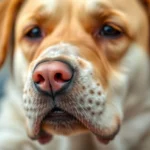
Swallowing foreign objects, especially sharp items like a sewing needle, can pose serious risks to your dog’s health. When dogs consume non-food items, it often leads to anxiety for pet owners, as the potential dangers can be severe. Understanding the immediate actions to take if your dog swallowed a sewing needle is crucial for their safety and well-being.
Understanding the Risks
Common Foreign Objects Swallowed by Dogs
Dogs are notorious for their curious nature, often leading them to swallow various foreign objects. Common items include:
- Toys and their parts: Chewed-up pieces of toys can easily be ingested.
- Food wrappers: These may attract a dog’s attention due to food residue.
- Clothing: Socks, underwear, and small articles of clothing are frequent culprits.
- Household items: Items like coins, batteries, and even small tools can end up in a dog’s stomach.
Statistics indicate that veterinary clinics treat thousands of cases of foreign object ingestion every year. The American Veterinary Medical Association (AVMA) reports that this issue accounts for a significant portion of emergency visits.
Specific Risks of Sewing Needles
When considering the specific risks associated with sewing needles, the dangers become more pronounced. A sewing needle can cause:
- Punctured organs: Needles can penetrate the stomach or intestines, leading to serious internal injuries.
- Internal bleeding: Sharp objects can damage blood vessels, resulting in bleeding that may not be immediately visible.
Symptoms that may indicate complications from swallowing a sewing needle include:
- Vomiting: This may be a sign of distress or injury.
- Abdominal pain: Your dog may show signs of discomfort or pain when touched.
- Lethargy: A sudden drop in energy can indicate that something is wrong.
- Loss of appetite: If your dog refuses food, it could be a sign of a serious problem.
Immediate Actions to Take
Assessing the Situation
If you suspect that your dog has swallowed a sewing needle, the first step is to assess the situation. Signs that your dog may have ingested a needle include:
- Rummaging through your sewing supplies or fabric.
- Visible distress or discomfort.
- Sudden changes in behavior, such as hiding or excessive panting.
To determine the urgency of the situation, consider how the needle was ingested. If your dog is showing signs of distress, you should act quickly.
When to Contact a Veterinarian
Certain scenarios necessitate immediate veterinary attention:
- If your dog exhibits severe symptoms like persistent vomiting, abdominal swelling, or signs of shock.
- If you know for certain that your dog has swallowed a sewing needle and is symptomatic.
Timely intervention can be the difference between a simple treatment and a life-threatening emergency.
First Aid Measures
While waiting for veterinary help, there are a few first aid measures you can take:
- Keep your dog calm: Stress can exacerbate the situation.
- Limit movement: Encourage your dog to rest to minimize potential damage.
However, do NOT attempt to induce vomiting unless instructed by a veterinarian, as this can cause the needle to cause more harm on the way back up.
Veterinary Examination and Treatment
What to Expect During a Vet Visit
When you arrive at the veterinary clinic, the vet will perform a thorough examination. Common diagnostic procedures may include:
- X-rays: To visualize the needle and determine its location.
- Ultrasounds: These may be used to assess internal damage or bleeding.
The vet may ask questions about the incident, such as:
- When you noticed your dog ingesting the needle.
- Any symptoms your dog is displaying.
- Your dog’s medical history and any previous incidents of foreign object ingestion.
Treatment Options
The treatment options available will depend on the severity of the situation. Possible treatments include:
- Observation and monitoring: If the needle is in the stomach but not causing immediate distress, your vet may choose to monitor your dog closely.
- Endoscopy: This minimally invasive procedure can allow the vet to retrieve the needle without surgery.
- Surgery: If the needle has punctured an organ or is lodged in a dangerous location, surgical intervention may be necessary.
Post-Treatment Care
After treatment, your dog will require careful monitoring during recovery. Expected aspects of post-treatment care include:
- Rest: Limit your dog’s activity to promote healing.
- Medication: Your vet may prescribe pain relief or antibiotics to prevent infection.
Signs of potential complications to watch for at home include:
- Continued vomiting or diarrhea.
- Changes in appetite or behavior.
- Swelling of the abdomen.
Preventative Measures
Dog-Proofing Your Home
Preventing foreign object ingestion starts with making your home a safe space. Here are some tips for dog-proofing:
- Store sewing materials securely: Keep needles, threads, and fabric out of reach.
- Use child-proof containers: Store hazardous items in containers that dogs cannot access.
- Regularly inspect your home: Check for small items that could be ingested, such as buttons or small toys.
Training Your Dog
Training can be an effective way to discourage scavenging behavior in dogs. Techniques include:
- Leave it command: Teach your dog to ignore objects that could be harmful.
- Positive reinforcement: Reward your dog for obeying commands that keep them safe.
Consistency is key; regular training sessions can greatly reduce the likelihood of your dog consuming dangerous items.
Resources and Support
Finding a Veterinary Professional
Selecting a veterinarian with experience in emergency care is crucial. Look for clinics that offer:
- 24-hour emergency services: Having access to immediate care can save your pet’s life.
- Advanced diagnostic tools: Facilities equipped with X-ray and ultrasound machines are better prepared to handle emergencies.
Support Groups and Online Resources
Connecting with other pet owners can provide valuable support. Consider joining forums or online communities where you can share experiences and learn from others facing similar issues. Websites dedicated to pet health can also offer insights and further reading on related topics.
Conclusion
In conclusion, knowing what to do if your dog swallowed a sewing needle can make a significant difference in your pet’s health. Understanding the risks, taking immediate action, and seeking veterinary care are all crucial steps. By dog-proofing your home and training your dog, you can help prevent such incidents from occurring in the future. Stay vigilant, proactive, and informed about your dog’s health and safety.









